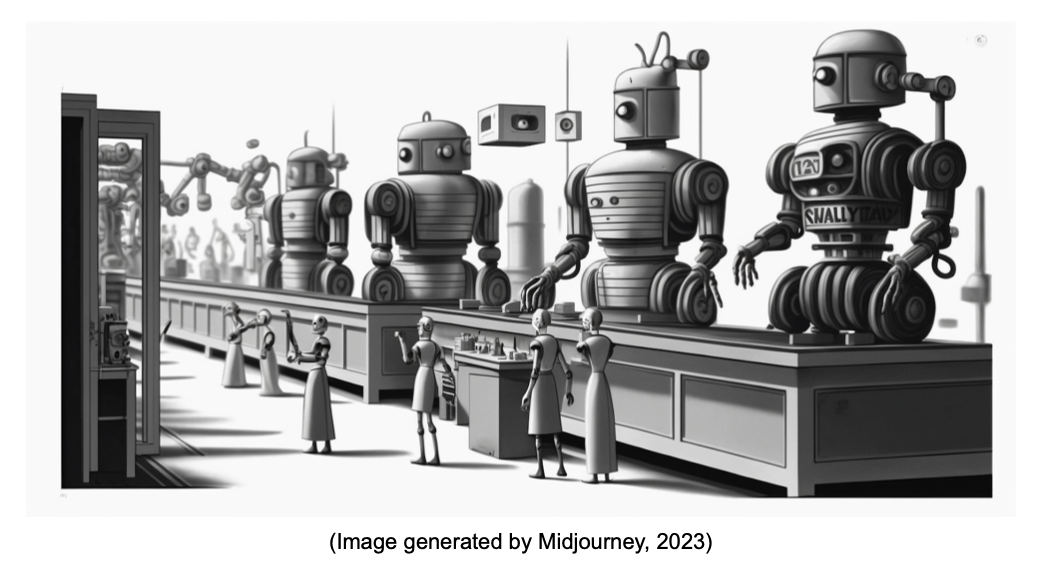The AI Revolution -
Robotics

The AI Revolution
Robotics


/en/the-ai-revolution/natural-language-processing/content/
Robotics is a field that focuses on designing, building, and programming robots. Robots can perform tasks automatically, usually through a combination of sensors, “actuators,” and computer systems.
These machines come in many different shapes and sizes–from small ones that fit in your hand, to large ones used in factories. They can be controlled remotely, or they can be programmed to operate on their own.

The way a robot works depends on its design and purpose. However, most of them have some basic components that allow them to “sense, think, and act”:
Here are some examples of different types of robots being used in various fields:
Robotics is a growing field that’s used in lots of places, including factories and hospitals. As technology advances, we can expect to see more and more robots around us every day.

Robotics has a number of potential downsides. Firstly, the cost of developing and implementing robotic systems can be high, limiting their accessibility for individuals and small businesses.
Secondly, job displacement is a concern as robots increasingly replace humans in certain tasks, potentially leading to unemployment or the need for workers to acquire new skills.
Lastly, ethical (or moral) considerations arise as robots become more independent, raising questions about robot rights, accountability, and potential unintended consequences. We’ll explore the ethical considerations in the next lesson.
Continue the Convo: Find an article or video about one of the types of robots being used in a field that interests you. How has the technology changed? Which capability did you find the most intriguing or worrisome?
/en/the-ai-revolution/ethics-in-ai/content/